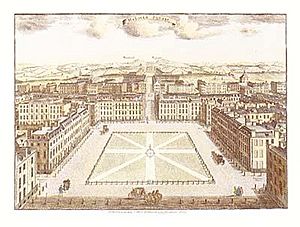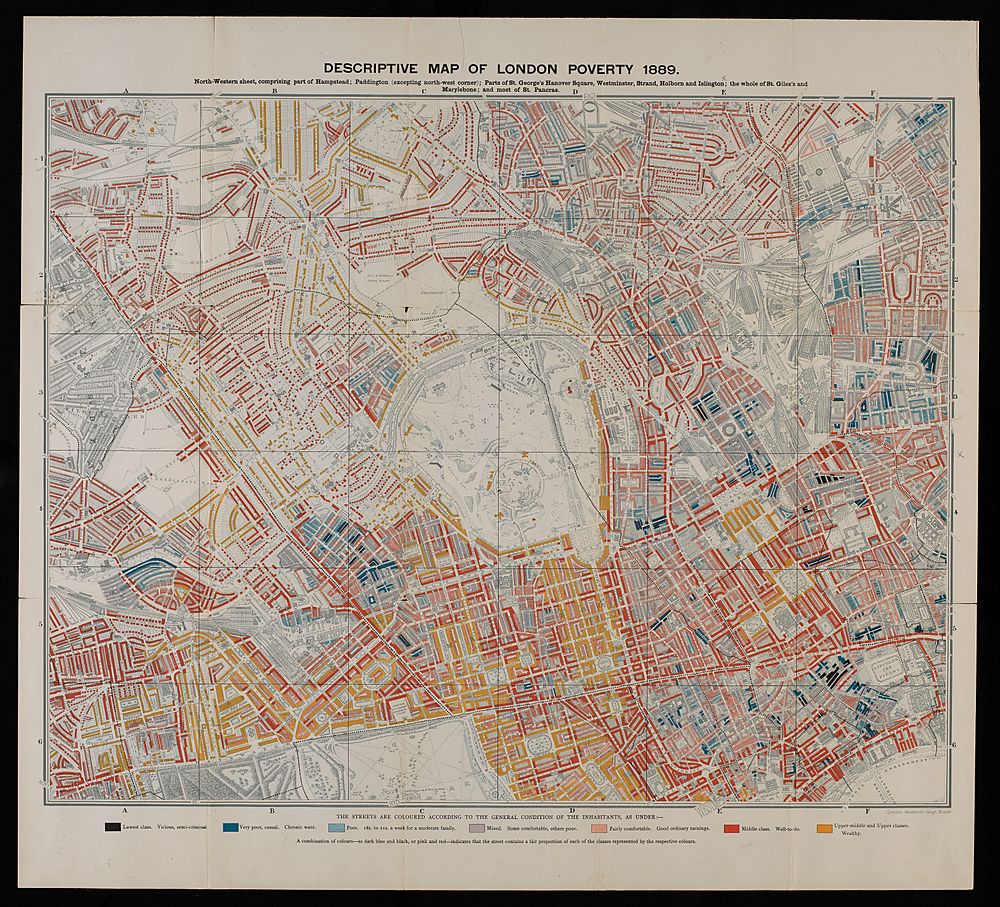Hanover Square, Westminster facts for kids
Hanover Square is a lovely green square located in Mayfair, a part of Westminster, London. It's found southwest of Oxford Circus, where busy Oxford Street meets Regent Street. Six different streets meet at this square, including Harewood Place, Princes Street, Hanover Street, Saint George Street, Brook Street, and Tenterden Street. These streets connect it to popular areas like Oxford Street and Bond Street.
Contents
History of Hanover Square
The area that became Hanover Square started to be developed shortly after King George I came to the throne in 1714. He was the Elector of Hanover, a German state, before becoming King of Great Britain. The land belonged to Richard Lumley, 1st Earl of Scarbrough, a famous soldier and statesman. He sold many plots of land for people to build fancy townhouses and villas.
How Hanover Square Got Its Name
The area was named Hanover Square to honor the new King George I. This name also showed strong support for the Hanoverian succession of 1714. This was when the Hanover family took over the British throne. It also reflected the Act of Settlement 1701, a law that made sure no Catholic could ever become the English monarch.
Early Residents and Buildings
Many important people lived in Hanover Square early on. These included generals like William Cadogan, 1st Earl Cadogan and Sir Charles Wills. They were famous for their roles in the wars of the time.
The local church, St George's, Hanover Square, is just a short walk south of the square. It was built on land given by William Steuart. In 1759, James Abercrombie, a British army commander, lived nearby on St George Street. Today, the buildings in the square are numbered from 1 to 25.
While some of the original 18th-century houses are still there, many have been replaced over time. Now, most of the buildings are offices. For example, the London office of Vogue is located here.
Modern Changes: Crossrail
In recent years, the northwest corner of the square was changed as part of the Crossrail project. This big project built a new railway line across London. A new entrance for the Elizabeth line at Bond Street station was built here, with new office spaces above it.
Famous People and Groups
Hanover Square was a very fancy place in the 1800s. Many important people and organizations had their homes or offices here. Some of these included:
- The Hall Woodhouse family, who were well-known surgeons from the 1870s to the 1910s, lived at No. 1.
- John Wallop, 3rd Earl of Portsmouth, and his family lived at No. 2 in 1823.
- The Royal Agricultural Society had its offices at No. 12 in the 1880s.
- Ibbs & Tillett, a company that promoted events, was located at No. 19.
- Bishop John Egerton (who passed away in 1787) and his wife lived at No. 23. He was the Bishop of Durham, and his wife was the daughter of a powerful local leader, the Earl of Portland.
Gallery
-
A statue of William Pitt the Younger on the south side of Hanover Square.






